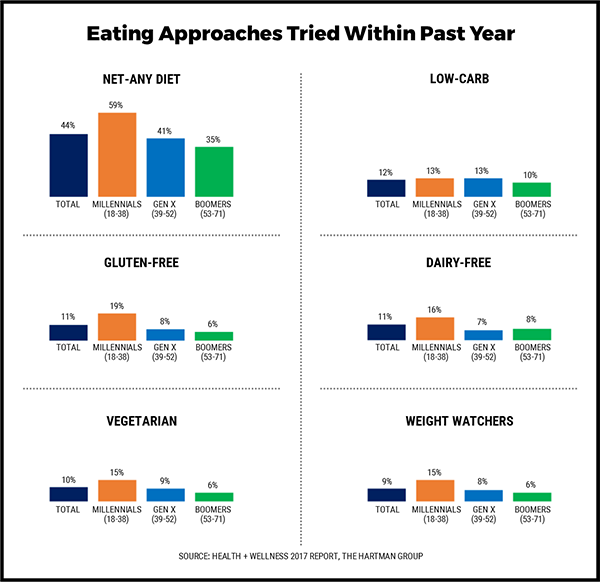Resolutions in 2019: Diets and How We Eat Today
Resolutions in 2019: Diets and How We Eat Today
Changing Diets Isn’t Just a New Year’s Resolution: Nearly Half of Consumers Do It Year-round

Yes, it’s really that time again — time to atone for all those holiday treats, and sandwiched somewhere between television ads featuring Jessie James Decker touting the wonders of the South Beach Diet and others extolling the virtues of Nutrisystem meals and shakes, nearly all of us are likely thinking “Maybe I’ll try eating a little differently (at least for a little while).”
It’s an all too familiar scene, and thoughts of getting back on track to more “sensible” diets are fueled by weight management and diet product marketers who knowingly spend huge proportions of their ad budgets at the advent of a new year, hoping to capitalize on consumers eager to experiment with new diets.
We know, however, that this isn’t necessarily a seasonal activity for consumers. Despite their holiday indulgences, healthy eating remains a year-round, central feature of most consumer notions relating to health and wellness lifestyles. For most, healthy eating is defined by fresh, whole, less processed foods, which consumers believe retain more of their nutrients.
We now see more consumers than ever experimenting with their diets. Our Health + Wellness 2017 report finds that more than four in ten (44%) consumers have experimented with some type of diet or eating approach in the past year. As the following chart depicts, the top approach to eating named was low carb (12%), followed by gluten-free (11%) and dairy-free/lactose-free (11%).
The types of approaches to eating that consumers have tried reflect, in part, the modern vilification of carbohydrates and the popularity of elimination approaches. Both Core consumers and Millennials are significantly more likely to have tried a different eating approach than other segments or cohorts.
However, the diversity of approaches represented also reflects consumers’ interest in finding the right approach for them and even an enjoyment of eating differently. Correspondingly, consumers experiment with “free-from” products (e.g., gluten-free) to both feel better and try out a new way of eating. As such, positioning of these products should revolve around not just allergies and intolerances but also adding variety as a route to wellness.
Our Analysis
“Dieting” is no longer just about weight loss, and weight loss products should not be positioned as such. Consumers like to talk about weight loss as a route to feeling better and being able to do more both now and in the future.
Weight Watchers name change to “WW” is a clear indication that “the diet” is no longer a tacit remedy for mainstream consumer concerns with health issues. Weight Watchers has profoundly shaped the culture of dieting in the U.S. for half a century, but contemporary health and wellness notions have moved beyond weight loss and management. While previous shifts have more closely aligned WW to current holistic understandings of health and wellness, the name change marks a turning point that we expect other companies and brands to mirror.
To get the most up-to-date insights into consumers and the health and wellness marketplace, sign up for The Hartman Group’s Health + Wellness 2019 syndicated research. LEARN MORE

